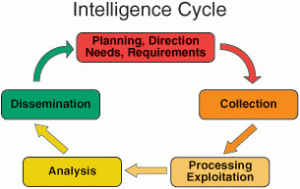 Abstract: Intelligence information is not different from common information. Nevertheless, the effect is that of optimizing state power and international influence at different levels. During crisis times, these two support the efficient use of force. Sometimes, during a crisis situation the effect goes further and it is done most of all in diplomacy in order to implement foreign policy and less in conceiving it. In both times of peace or war the most significant impact of the informative activity is materialized in its cumulative character and in its less surprising contribution in increasing efficiency and its capacity to influence.
Abstract: Intelligence information is not different from common information. Nevertheless, the effect is that of optimizing state power and international influence at different levels. During crisis times, these two support the efficient use of force. Sometimes, during a crisis situation the effect goes further and it is done most of all in diplomacy in order to implement foreign policy and less in conceiving it. In both times of peace or war the most significant impact of the informative activity is materialized in its cumulative character and in its less surprising contribution in increasing efficiency and its capacity to influence.
Keywords: source of information, informative activity, informative surveillance, spying, international terrorism, battlefield.
1. INFORMATIVE ACTIVITY
Informative activity needs nowadays a laborious structure and it represents a process which takes place sequentially, between multiple structural elements (agencies).The first stage consists of gathering information and it ends in single source results which are most of the time written memorandums from each of the sources of information. The second stage consists of a multisource review of information based on all available data and it has as purpose development of finite information. Next is a period of dissemination done by beneficiary structures of decision and structures responsible with developing policies called receptors, clients, consumers, users, beneficiaries etc. Between the review stage and the dissemination stage – but not necessarily – there is an intermediary stage during which departments and agencies combine their personal information in order to obtain special interdepartmental “national” evaluations for the highest level of political leadership. One must know that such a division is far from being an exact one but it has the possibility of providing the main framework of the system. The informative activity has an internal and an external part. In practice, both internal and external activities (in security purposes) overlap. External threats have internal elements and vice versa. Spying is done by external elements but it represents a threat to the internal elements. The border nature of the target represented by AL- QAEDA and its external sources make this international terrorist organization a classic internal and external ensemble. Most of the terrorist actions are openly international and antiterrorism makes the informative activity expand, in purpose of security, its domain of concerns toward its armed forces, ships, aircraft and compatriots from across the border. In other words, a clear distinction does not exist. One of the classifications of the external informative activity has as a criterion the country or “geographic area”. This criterion depends strictly on the political and military realities. For example, if during The Cold War the West’s most important target was the former Soviet Union and the countries which took part at The Treaty of Warsaw after the fall of the Iron Curtain the geographic area of targets consists in countries which support the international terrorist phenomenon. China and the Middle East continue to present a constant similar strategic interest with nuances that are necessary especially in what concerns the first one. It is certain that today targets consist less in countries and more in specific fields of activity. With all these, geographic targets can provide an approximate kind of sketch of the way of distributing effort in the informative activity domain.
Until the terrorist attacks from 9/11 against the USA, in the classification based on the criterion domain the informative activity was classically known by specialists worldwide as “political”, ”military” and ”economical” informative activity. This classification has its own weak points. Some information systems cover multiple targets (Gov.Dec. 500, 2009). Satellites can monitor at any time, simultaneously, multiple targets while other systems act as giant vacuum cleaners that gather all types of information from which only those that are important are selected. In essence, the presented domains are not found in pure state, they overlap and duplicate. Regarding the external informative activity mutations are more representative. If before the fall of communism the prior domain was the defense domain, after 1990 the balance has started to tip in favor of the economic domain because after 9/11 the international terrorism domain started to gain an infinitely greater share as before 9/11 maybe even more important than the economical and military domain. It must be specified that these mutations are visible and they continue to produce in both domains of activity, intelligence and counterintelligence – which means “the informative activity performed by other states” meaning the activity of getting information about all informative in nature external threats not only about those specific to spying, born from using all types of means (SIGINT, HUMINT, etc.) Between the categories of targets specific to counterintelligence can be found targets that not necessarily belong to a state. Some of these targets belong to the economic category. The effort from the domain of informative activity cannot be classified strictly. A clarification on the geographic domain and on the domain of action would elude the larger purpose the informative activity has in understanding realities from other areas “as a whole” or all aspects of the alleged problems both local and global.
2. SOURCES OF INFORMATION
The sources of information used for obtaining data and information about terrorists are:
HUMINT Sources are used for designating information obtained from people but also for designating the domain of informative activity which uses mostly the human element in order to obtain information especially from other human subjects. In performing these missions, HUMINT has sources that can be organized to form a pyramid with every day sources at the bottom which are of relatively low interest and which become more and more interesting as we climb to the top of the pyramid. At the bottom of the pyramid is the information gathering activity from travelers, experts and casual informants who have information about targets abroad etc (www.interpol.int). This kind of HUMINT collects information in a similar way from refugees and emigrants. HUMINT agencies tend to be a flexible resource category, for a variety of purposes, both in peacetime and in wartime. However, even the sources from the top of the pyramid have distinct limitations. Reports and comments from the memory of the agents are subject to human subjectivity and specific distortions. At one point, they can be so far from reality that their safety becomes unreliable. The advantage is that HUMINT subjects (informants) are almost the only means of penetration of international terrorism and the counterintelligence activity has needed and will always need information to deal with actions and other internal threats. HUMINT agencies represented in the twentieth century a domain with a permanent upward evolution, although at a much lower scale from specific sources which gathered information by technical means.
SIGINT Sources have become the most prolific sources of the twentieth century. The real pulse of the modern SIGINT sector of development consisted at the beginning of this century, in the introduction of radio waves in order to achieve military communications. Its importance increases even more during World War II, with the intensive use of radio waves, radar and beacons. After 1945, the Cold War had integrated the electronic technology era, which further led to the increase of the importance of the SIGINT domain. A Western study from 1989 noted that „The Soviet Union has by far the most developed domain of SIGINT in the world „.
The process of gathering information was dealing with the gathering of information without the knowledge or cooperation of the target. Usually this process takes place through specific undercover means, designed to penetrate the target’s organized security measures. However, this process also includes some means with a less obvious character, in particular for collecting information from conflict areas.
IMINT Sources evolved and have become, after 1945, as important as the SIGINT domain. In peacetime a part of the activity of the IMINT domain consists in gathering information from the air. . Images taken from planes, filled with those taken from unmanned aircraft, are currently the primary means of battlefield surveillance during wartime. The satellite branch of the IMINT domain has acquired dimensions which have increased ever since the Cold War. Technical progress has reflected under the aspect of opportunity. Information from photos taken by satellites reflected a „reality” delayed as the photographic film had to be sent periodically on Earth or retained inside the satellites until they were removed from the orbit at the end of the mission. Today, digital images can be instantly transmitted to ground stations directly through a satellite relay. Regarding the value of using information in the IMINT domain there are some inherent limitations. First of all, interpretation of aerial photographs or satellite photographs is a process that takes place more slowly than other processes of operating with information from SIGINT sources. Second, IMINT sources cannot see rather than what can be seen and cannot know what is hidden or what is not yet there (see the Gulf War or Afghanistan). A third limiting factor is the fact that information from the IMINT domain consists of images or sequences of images. This requires the use of satellites that evolve at „low” orbits. Therefore, monitoring changes in the evolution of a specific target depends on the frequency of crossings done by a satellite and it is estimated that the best prediction of frequency shift during day time, for a single satellite, is considered by experts as one day. During crisis situations, when aviation can be used over the target area, the IMINT satellite domain and the conventional one have a complementary role. But satellite capabilities do not consist only of the extent of areas that can be observed, but also in its own satellite capacity to monitor the territories of other countries during peacetime. Vis-à-vis these aspects should be considered the financial issue involving the use of satellites , which now have become an efficient US-Russian monopoly. Some limited possibilities in this regard have China, France and also Israel since 1995. It is certain that the use of satellites is an element that propels a nation in the first league of informative activity.
NUCINT Sources designate the informative activity in the nuclear domain, in which satellites are used to detect nuclear explosions throughout seismological means that record earthquakes caused by underground nuclear explosions, by taking air samples to monitor the level of radioactivity in the atmosphere and with the use of gamma radiation, which reveal the presence of nuclear material within a short distance.
RADINT Sources designate conventional radars which can discover large distances, including those developed for discovering objects evolving in space as well as different types of radar designed for targets evolving beyond the horizon line.
ACOUSINT Sources are sources that designate the gathering process from the aquatic environment throughout sonic methods. Also, one part of the ACOUSTINT informative activity category takes place above the water, given the capability to discover military forces from long ranges with the use of remote devices capable of detecting sound, vibration and the presence of substances with odor properties. Such defensive measures that are adopted to counter the specific actions of the ACOUSTINT and RADINT domains are included in the implementation of technologies used for „footprint reduction” and „satellites” in the production of military equipment.
MASINT Sources represent the technical and scientific information obtained throughout quantitative and qualitative analysis.
PHOTOINT Sources are secret and interpreted photographic materials.
RINT Sources are electromechanical energy sources that are received unintentionally.
FISINT Sources represent the intelligence domain referring to signals used in directing, the SIGINT category.
TELINT Sources represent the intelligence domain of interception and analysis of signals used in telemetry, they are a part of FISINT
OSINT Sources are „open sources” (Open Sources Intelligence) representing informative finished products obtained by processing primary information collected from open sources as well as public documents media, books and magazines, „gray” literature and the Internet.
Regarding open source, there are a growing number of ideas today that highlight the importance which they represent in the economy of the informative activity, importance caused primarily, by today’s information explosion. Much of the Western experts believe that the share of sources in the intelligence activity is “open source” (Gov.Dec. 2010-2012). The appreciation seems hazardous to a first assessment. Given, however, the particular impact of the media in the contemporary world, the extension of the freedoms of expression and opinion, we can say that we are witnessing a change in the relationship between open sources and covered sources meaning that the last are shrinking, as a coverage area, but also in volume in favor of the first. The problem that arises is however otherwise, namely accuracy. A confidential information can be „dressed” from the perspective of the open sources with a multitude of data and many additional or complementary elements resulting from the journalist in question wish to seem more informed, more prolific and expert in the problem in this case so that the essence and the true information, with an actually confidential character, to escape unnoticed or to be diluted to such an extent that it no longer poses only importance itself. To affirm and support today that in a modern intelligence service the share is „open source” would be very hazardous, because if something like this would be true that service should have a processing, analyzing and synthesizing, super-sophisticated center, able to filter media and to quickly separate „dead” information from the „relevant”, „prestigious” information. But this possibility in view of services and intelligence agencies, does not exist yet, not even in major countries.
Information gathering process is directed against targets that do not agree with this fact and usually take measures to counteract this process. In peacetime, in respect of targets from abroad, the most important part of the information gathering process takes place by means that distinguish the informative activity from the non-informative methods of the policy makers in order to acquire information. In time of war, the distinction between specific and nonspecific informative activity methods is less clear. Special methods of the covert information activities remain an attribute of it, but we are witnessing the increase of the collection of information from the battlefield by means with a less covered character. Furthermore, informative techniques from the battlefield merge with the military ones specific to „information from the battlefield”.
Military distinctions between these two types of information gathering contain accidental bureaucratic elements as well as elements related to conveniences but there is some logical reasoning that led to them. Intelligence obtained in the theater of war is somehow exploitable, less penetrable and more capable of penetrating, more complex and fragile (and therefore secret) than information from the theatre of war. However, using satellites and computers make some of these differences disappear.
In contrast the multisource informative activity is no different in its means. Its specific nature derives from the separation of its political recommendations and general orientation regarding its foreign policy (to which are added the inner aspects of the internal security). In this framework, external study fields and issues must be large. But the results produced by it are considered by governments as having regard to more enemies than allies and even more the studies in which they are involved come from the public domain. The informative activity should not be diverted to informational materials coming from covered sources. But it tends to have a stronger authority as this type of source has the most important contribution compared to sources completely „open”.
The informative activity justification is that it informs practical actions in useful ways. However the using of these activities varies: some reports are used immediately while others will be used with time. While many reports influence decisions through their cumulative effects others have an educational or long-term psychological value. Supervision for the purpose of warning constitutes a precautionary measure against things that might never happen. Some information is not used at all.From all these points of view of „intelligence” information is not different from ordinary information. However, the effect is to optimize the state power and international influence at different levels. In times of crisis they support the effective use of force. Sometimes during a crisis situation the effect goes further and it is done most of all in diplomacy in order to implement foreign policy and less in conceiving it. In both times of peace or war the most significant impact of the informative activity is materialized in its cumulative character and in its less surprising contribution in increasing efficiency and its capacity to influence.
3. CONCLUSION
In conclusion the role of information in identifying investigating and monitoring crises depends on the distribution of resources in informative activity chapters with a social and political international context , and its balance at one point. The increase of some or other domains depends on several factors: the political and military interests of the state, resources, the degree of receptivity of the „intelligence” product and its use in the decision process ,risk factors specific to the state and on the degree of adaptability of intelligence services to in these risk factors
BIBLIOGRAPHY
1. Reese Brown, F. (1993). Behind the Drumes and Bugles. International Journal of intelligence and Counterintelligence. Vol.6. No.3.
2. ***. (2010). Five steps to a safer Europe. (2012 COM). 673 – EU Internal Security Strategy in Action.
3. ***. (2009). Government Decision no. 500/2009 for the implementation of the passenger data transmission system in airport. Monitorul Oficial, 300.
4. ***. (2009). Government Decision draft for the National Strategy for integrated border management of the Romanian state 2010 -2012.
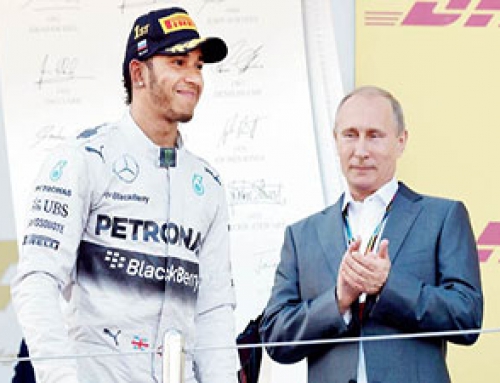
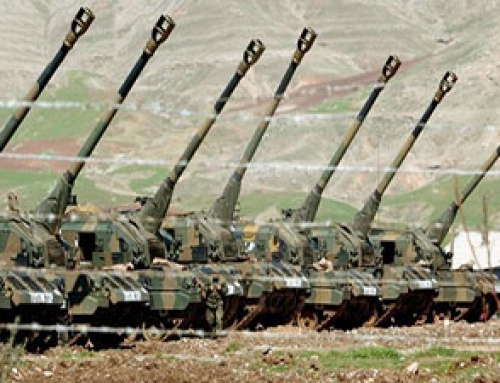
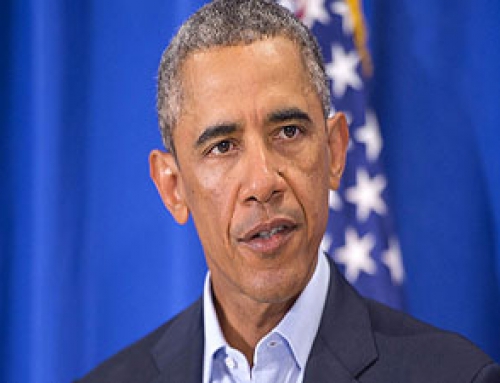
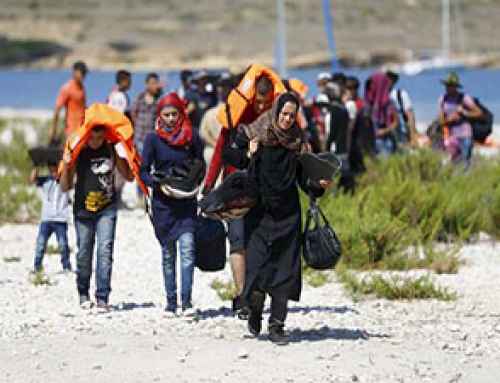
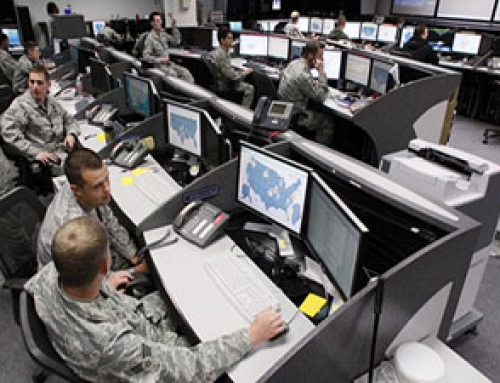
Comenteaza